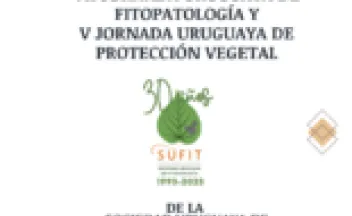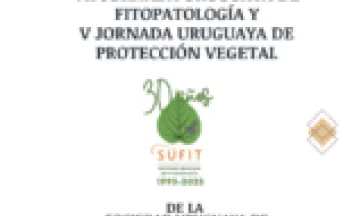
Instituto Nacional de Investigación Agropecuaria



?INIA Pindó? es un cultivar de papa con excelente aptitud para fritura en formato de chips, recomendado para abastecer la industria local de procesamiento.

El cultivo de soja en Uruguay es uno de los más importantes y abarca un área extensa de más de un millón de hectáreas. Si bien la inoculación de semillas de soja con rizobios ha demostrado ser efectiva para la fertilización nitrogenada, la utilización de tratamientos químicos para combatir enfermedades de implantación e insectos del suelo ha planteado desafíos significativos, tanto para la supervivencia de los rizobios como para el medio ambiente.

La sarna del manzano, causada por Venturia inaequalis, es una de las principales enfermedades que afectan al cultivo en Uruguay. El manejo de esta enfermedad se basa principalmente en el control químico con fungicidas de forma preventiva, complementado con fungicidas de efecto curativo. La aparición de poblaciones resistentes a algunos principios activos sumado a problemas toxicológicos y ambientales, han impulsado la necesidad de encontrar nuevas estrategias para el manejo de esta enfermedad.

Las enfermedades de las plantas son un factor importante que limita el desarrollo sostenible de la agricultura. La papa (Solanum tuberosum L.) representa el cuarto cultivo alimenticio en importancia a nivel mundial después del arroz, el trigo y el maíz. La "sarna común de la papa", causada por especies de Streptomyces patógenas, es una de las enfermedades de mayor importancia para este cultivo, limitando la producción y calidad comercial de los tubérculos producidos.